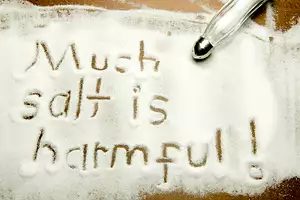Poor oral hygiene can contribute to poor overall health, so it’s important to take good care of your smile.
Here are 8 things that you might not be doing correctly.
1. You are done too quickly.
Experts from the American Dental Association recommend that you brush your teeth for at least two minutes. Most people fall far short of this goal, without even realizing it.
Ed Hewlett, DDS, professor of restorative dentistry and associate dean for outreach and diversity at UCLA School of Dentistry, states, “Different studies have timed people brushing their teeth and asked them how long they thought they did it for. Some people thought they’d brushed for a couple of minutes, but it can be less than half a minute. Our perception of how long we’re brushing is not very accurate.”
For best accuracy when it comes to brushing for long enough, try using an electric toothbrush with a timer, or use an egg timer on the side of your sink to keep track of the minutes.
2. Your pressure is too hard.
Brushing too hard can be bad for your teeth. Hewlett states, “When you press hard against your teeth and gums, you get a satisfying sensation that you’re really getting the teeth clean. But it’s not making your teeth cleaner, and it can do harm.”
The purpose of brushing is to remove the sticky plaque on your teeth that forms from the bacteria in your saliva. It is easily removed with a gentle to moderate pressure. “Pushing too hard can overstress the gum tissue and cause it to recede, exposing part of the tooth’s root. That area can become sensitive to hot and cold. The root is also more susceptible to cavities than the hard enamel part of the tooth,” states Hewlett.
3. You’re brushing at the wrong angle.
Many people automatically brush horizontally across their teeth, with a straight angle. It’s better to use a 45-degree angle with your toothbrush angled upward for your top teeth, and downward for your lower teeth.
This allows the bristles of the toothbrush to sweep beneath the gum tissue more effectively, removing hidden plaque. Use a circular motion for best results. If you are using an electric toothbrush, then you don’t have to worry about the angle, they are typically designed to contact the teeth at the proper angle.
Sally Cram, DDS, a periodontist in the Washington, D.C. area and spokesperson for the American Dental Association, states, “You don’t have to make O’s or circles with a sonic brush.”
4. You’re using a toothbrush with bristles that are too firm.
When you are shopping for toothbrushes, you will notice that it might be harder to find “firm” or “medium” bristles. This is because most experts agree that these stiffer bristles are too hard for your teeth and gums, and most dentists no longer recommend them. Using a soft or ultra-soft toothbrush is usually better for most people.
Dr. Cram explains, “Your gum is like a little turtleneck collar, and you need to get under that collar. Hard and medium brushes don’t do that and can actually abrade the gum.”
5. The head of your toothbrush is too big.
Your toothbrush needs to comfortably fit into your mouth, which means that, for most people, smaller brushes are going to work better. Dr. Cram recommends that unless you have an unusually large mouth, a smaller toothbrush head is going to be more effective.
6. You don’t change your toothbrush regularly enough.
Over time, the bristles of your toothbrush will become bent and splayed. When this happens, the 45-degree angle that you are using becomes less effective. Hewlett recommends, “Every three months, treat yourself to a new toothbrush.”
7. You are not a regular flosser.
This is a big one when it comes to oral hygiene. Too many people do not consider flossing to be a mandatory part of their oral hygiene regimen. According to a recent study found that more than 40 percent of Americans floss once per day, but a full 20 percent never floss.
Hewlett states, “Brushing alone is not enough. Toothbrushes reach a little between the teeth, but they don’t remove all of the plaque there. That’s where flossing and other products come in.” If you really hate flossing, try using an electric flosser, a bristled dental pick, or wooden dental sticks. These tools can be just as effective as flossing.
Hewlett explains, “When you brush and floss together, even though it seems inconvenient or cumbersome, it’s the best return on investment because of the enormous amount of disease you can prevent.”
8. You don’t always brush before bed.
Research has shown that about 98% of dental disease can be prevented by brushing twice daily using a fluoride toothpaste, and flossing once per day, as long as you get regular checkups. Those with poor oral hygiene have been found to be at a higher risk for heart disease.
Dr. Cram states, “Dental disease is totally preventable, and a lot of it can be avoided by stepping up your home brushing program and having check-ups.”
Make sure that you are using good oral hygiene habits, because they are essential for your overall good health.










Comments